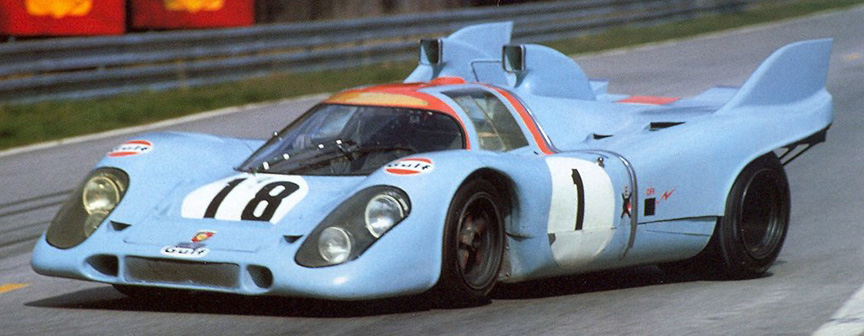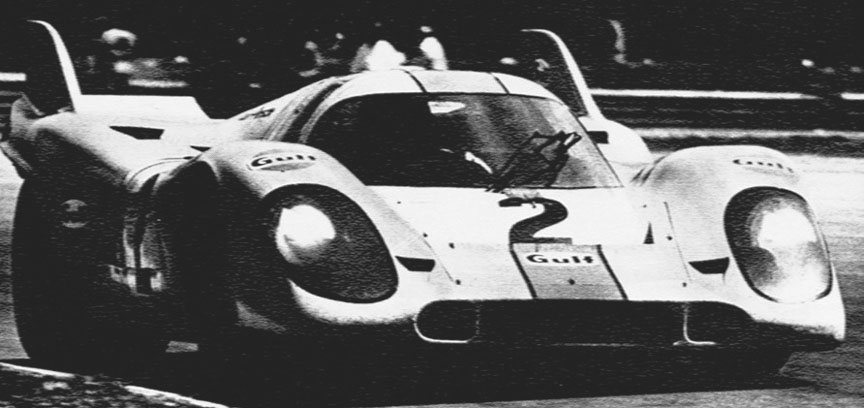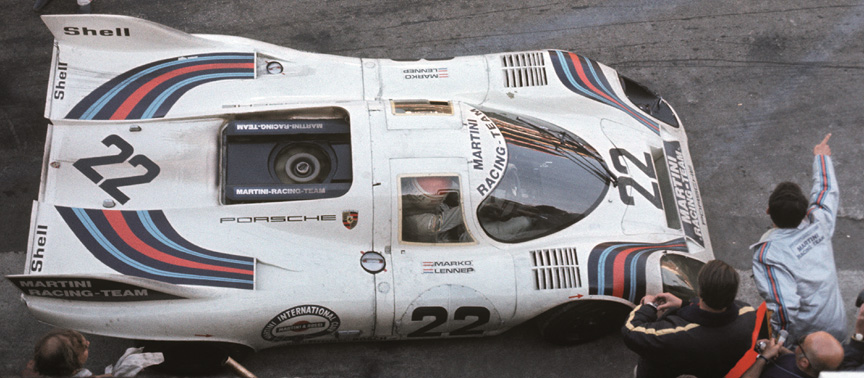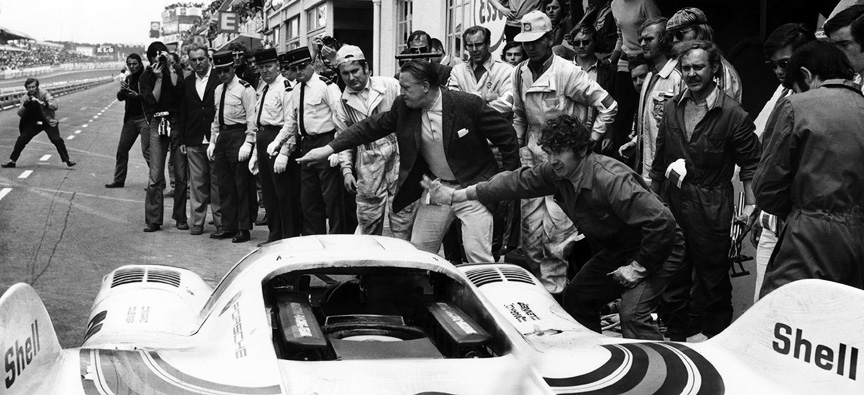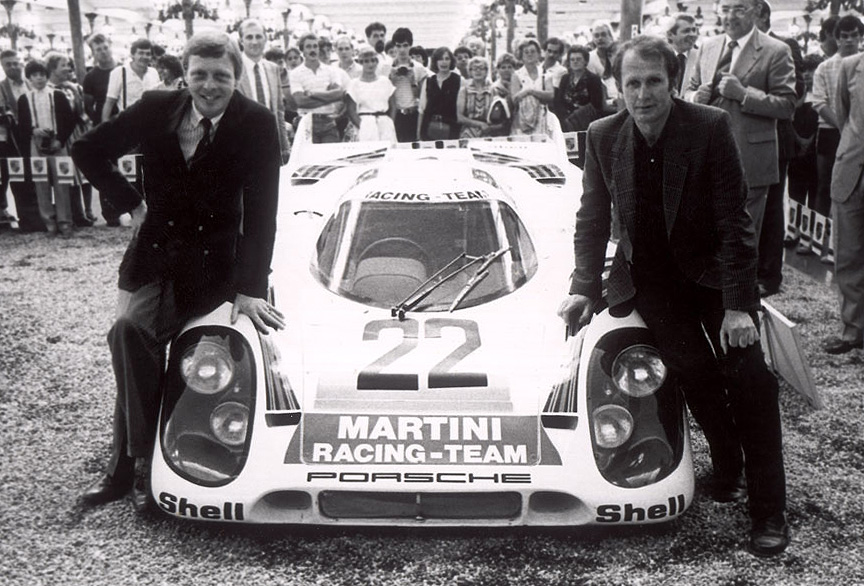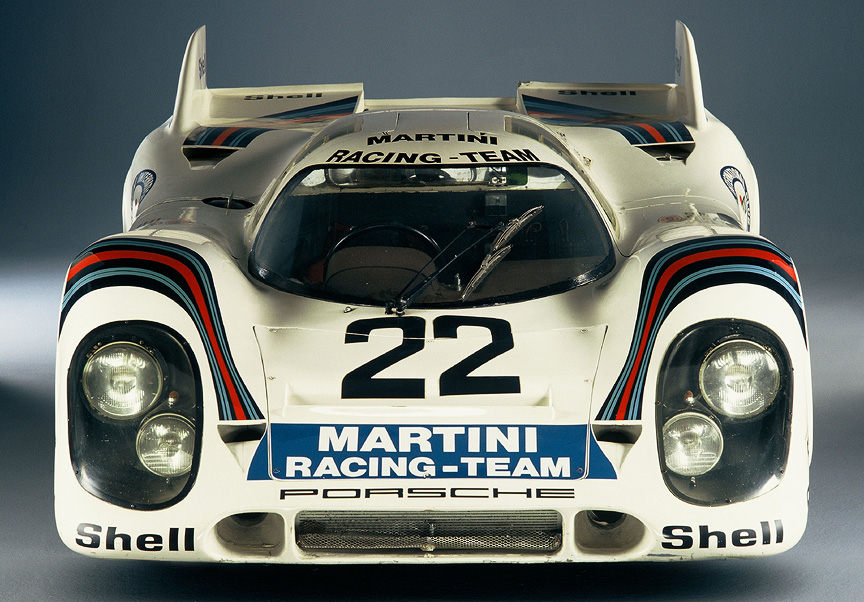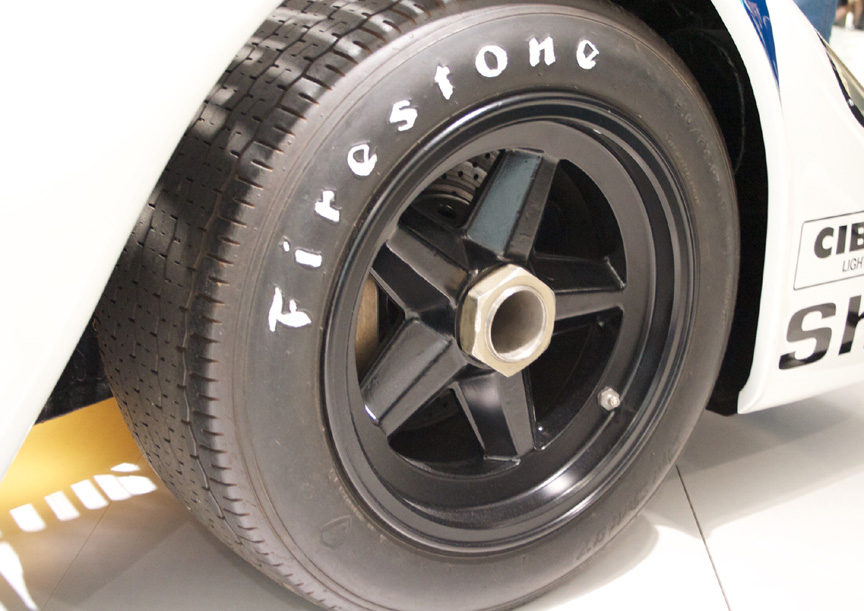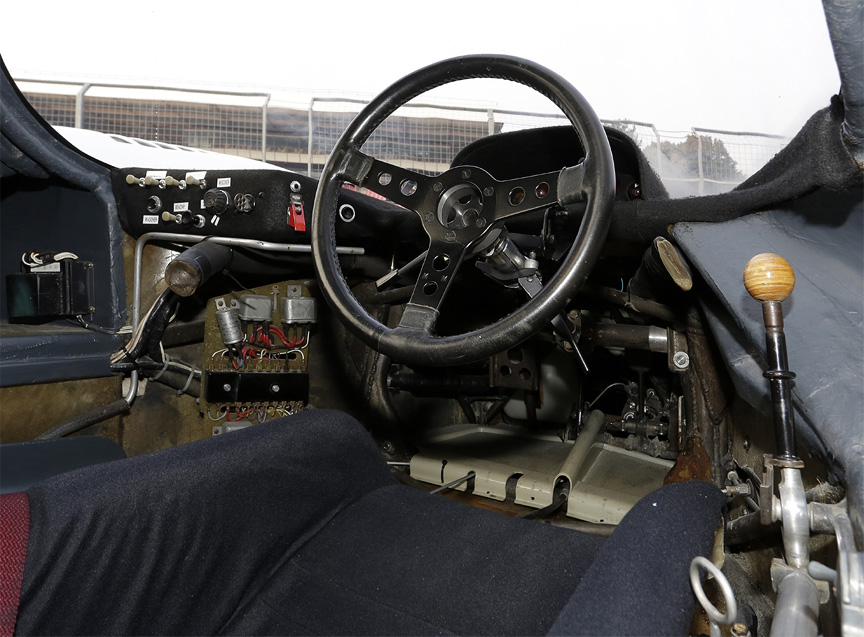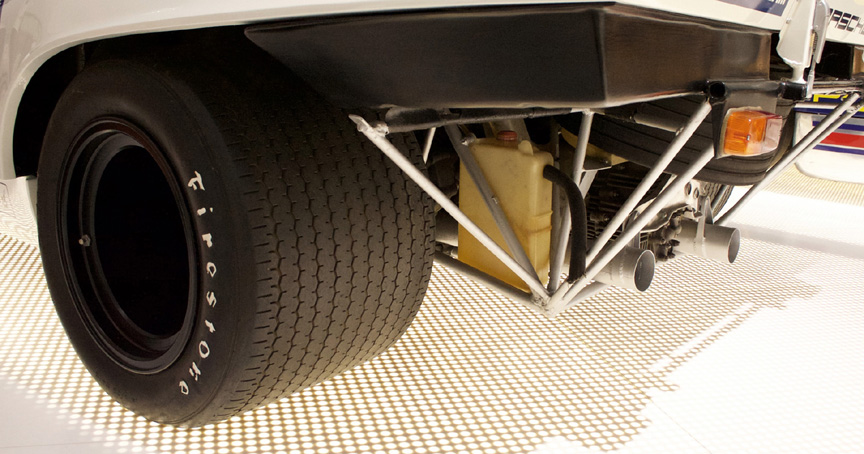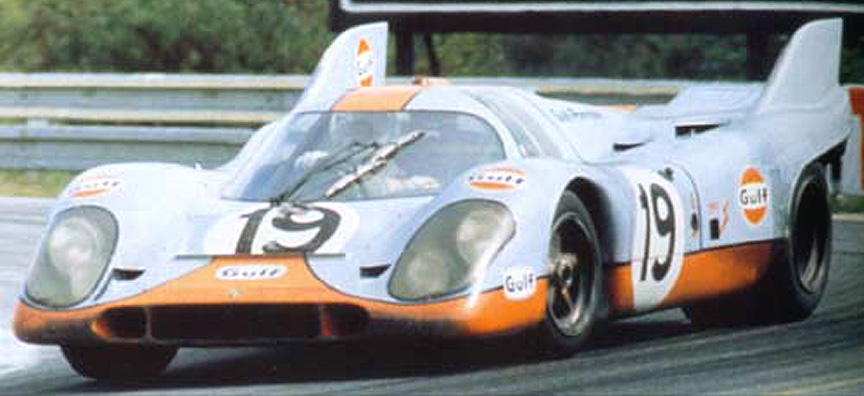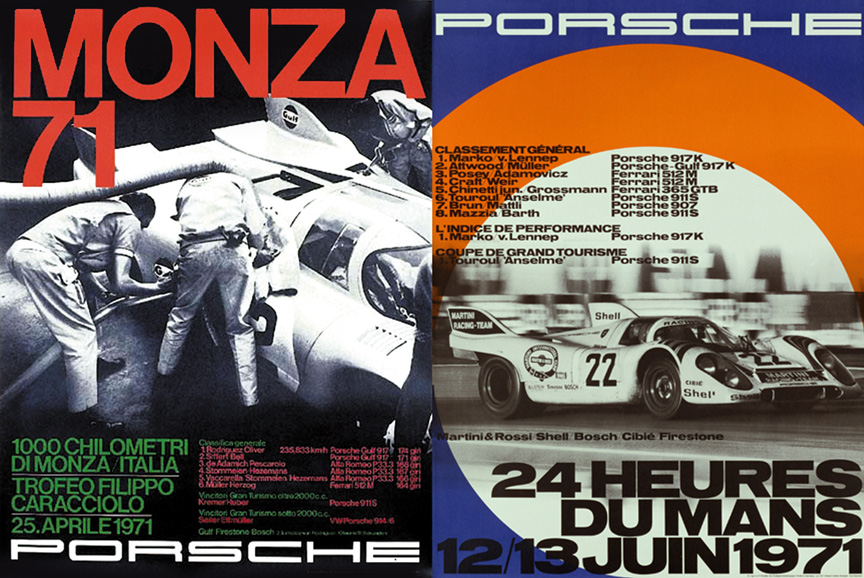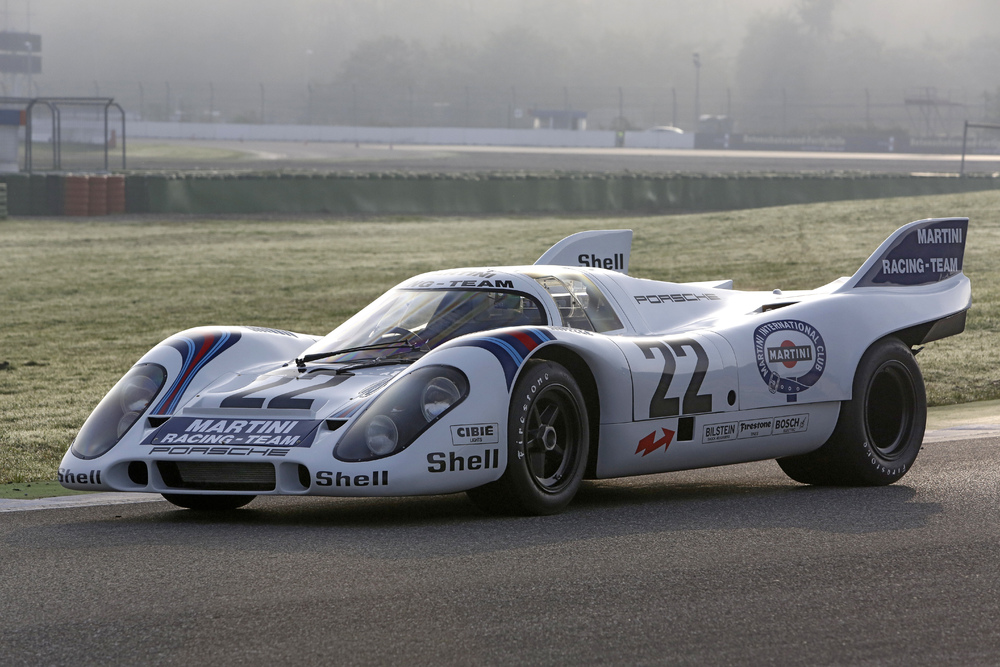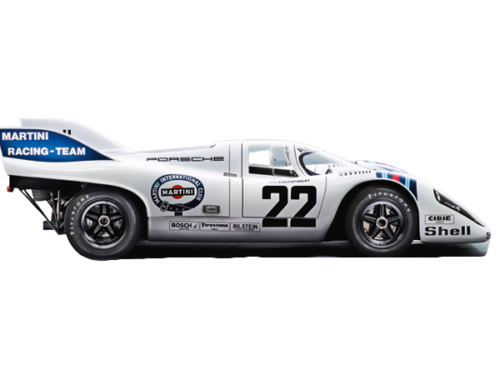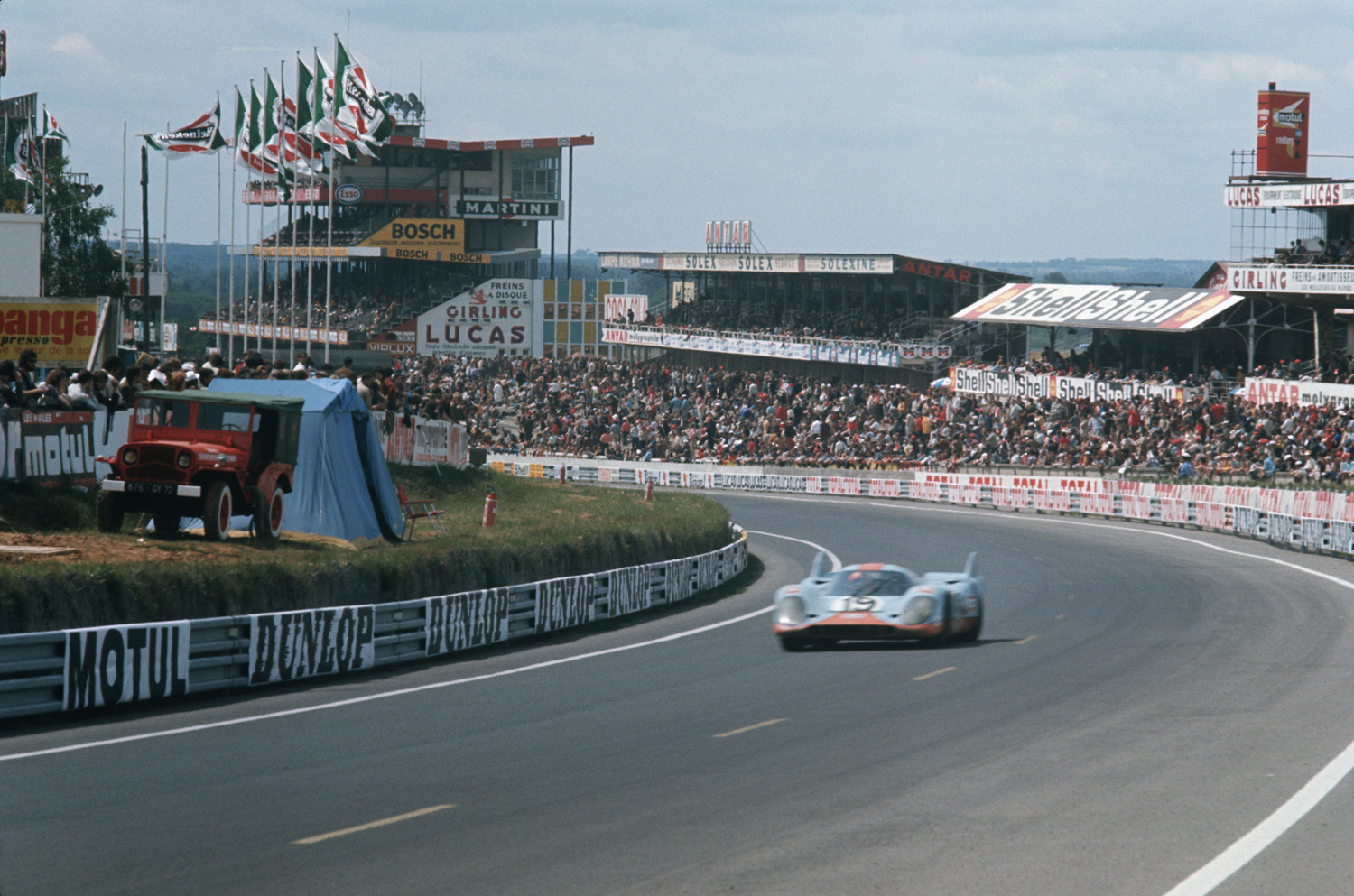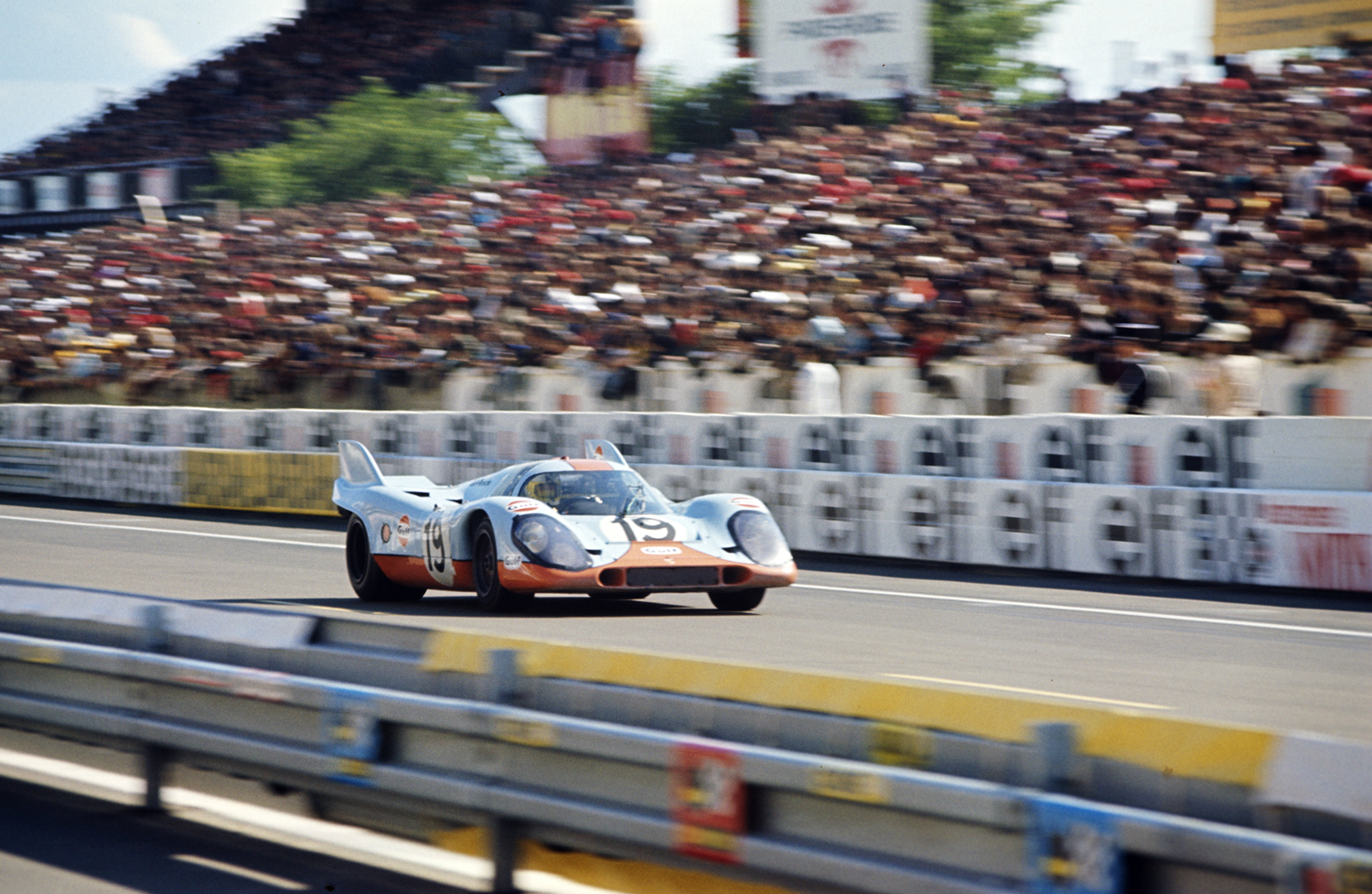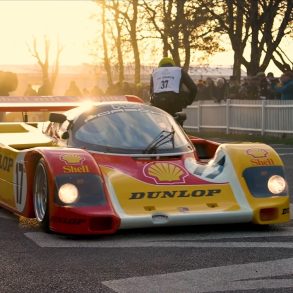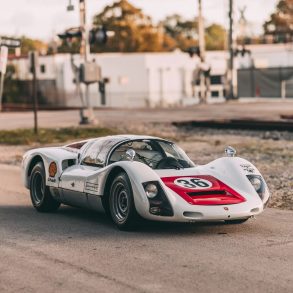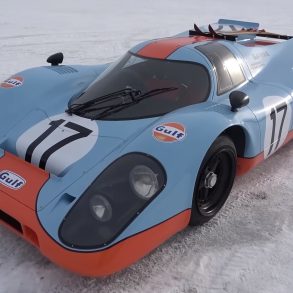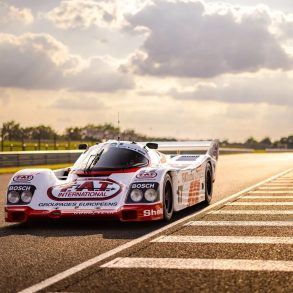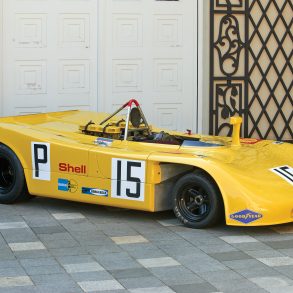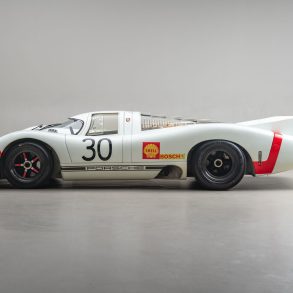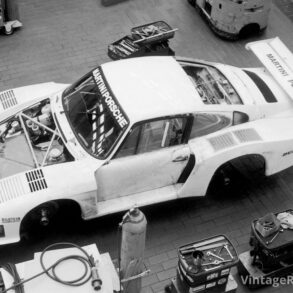Porsche 917 K (1971)
1971 Porsche 917 “Kurzheck” (Short Tail)
Also Known As: Porsche 917 KH Coupé or Porsche 917 K-71 / Premiere: 1971 April 17 at Le Mans test day / Achievements: Le Mans winner 1971
For the 1971 Season, Porsche faced some new competition including Roger Penske’s 600 bhp 512S and the Alfa Romeo T33/3. To prepare, Porsche revised both the short and long versions of the 917. Both had slight body changes that included vertical fins on the K and LH was changed to reach speeds up to 248 mph. Porsche also prepared the famous 917/20 ‘Pink Pig of Zuffenhausen’.
One of the most radical developments for 1971 was a single magnesium frame that was fitted to chassis 053 and raced by JWA/Martini. Painted white, this car placed first overall at Le Mans. It was driven by Helmut Marko and Gijs van Lennep to set an overall distance record.
1971 Porsche 917 KH In Porsche’s Words
The “shark fins” on the tail gave the Porsche 917 KH 1971 greater directional stability and reduced wind resistance by 11 percent. In 1971 a veritable armada of six Porsche 917s started at Le Mans. The car with start number 22 was special. The white race car with the characteristic Martini stripes had the new “shark fins” on the tail that Porsche had first used in pretraining in April. They gave the 600 hp (441 kW) race car greater directional stability and reduced wind resistance by 11 percent. This 917 was also the first Porsche with a magnesium tubular frame to be used in a race. This made the car so light that the technicians were able to use a 58-quart engine oil tank rather than a 21-quart one to improve the weight distribution and reach the required weight of 1,763 lbs. Completed on June 5, the car put in 343 miles in training for Le Mans and ultimately raced to victory in the 24-hour race with an average speed of 138.1 mph and a total distance of 3,315 miles. With this performance the drivers Gijs van Lennep and Helmut Marko set two records that would stand for 39 years. In typical Porsche style, they also won the “Index of Performance,” an award for the lowest fuel consumption relative to engine size.
The Full Story
In 1971, 917 head engineer Piëch becomes technical general manager at Porsche. The racing department relocates from Stuttgart to Weissach. Three new 917 chassis with magnesium tube frames are created, numbered 051, 052 and 053. Magnesium is considerably lighter than aluminium. Interestingly chassis numbers between 917-045 and 917-050 were not used. The magnesium tube frame is stiffer than the aluminium one, but burns in the case of fire. The main visual difference between the 1970 917 K and the 1971 917 K is the rear end with fins that the factory team cars received. Chassis 051 is only used for internal testing and is later scrapped. Chassis 052 is publicly seen once at Le Mans tests in April 1971. The 1971 bodywork with rear fins was not only reserved for the “real” 1971 cars, the magnsium framed cars, but some older aluminium-framed cars were also equipped with the newer aerodynamics.
A week after the Le Mans tests, a 917 K-71 is driven to Monza 1000 km victory by Pedro Rodriguez/Jackie Oliver.
The 1971 Le Mans event was more like a Porsche Cup than a Le Mans 24 hour race – 33 cars out of the 48 starters were Porsches. While in 1970 the start flag was waved by Ferry Porsche, in 1971 the honored person was Steve McQueen, the racer, actor and film maker, who had just finished his Le Mans film that his crew had filmed a year before. All the long tail 917s, the Le Mans special editions, fail and once again give the short tail 917 a chance to win. The 917-053 K-71 4.9 with magnesium chassis is in its first race and wins it (and would not race again). On their charge to victory, Helmut Marko/Gijs van Lennep cover record 5335.313 km (3315 miles) averaging 222.304 kph (138 mph). It is the distance record that stands for 38 years, until 2009. The Martini Racing car was followed on the second place by the John Wyer racing team (J. W. Automotive Engineering) 917 K-71 4.9 of Richard Attwood/Herbert Müller. In the finish 13 cars are classified including 10 Porsches and 3 Ferraris.

